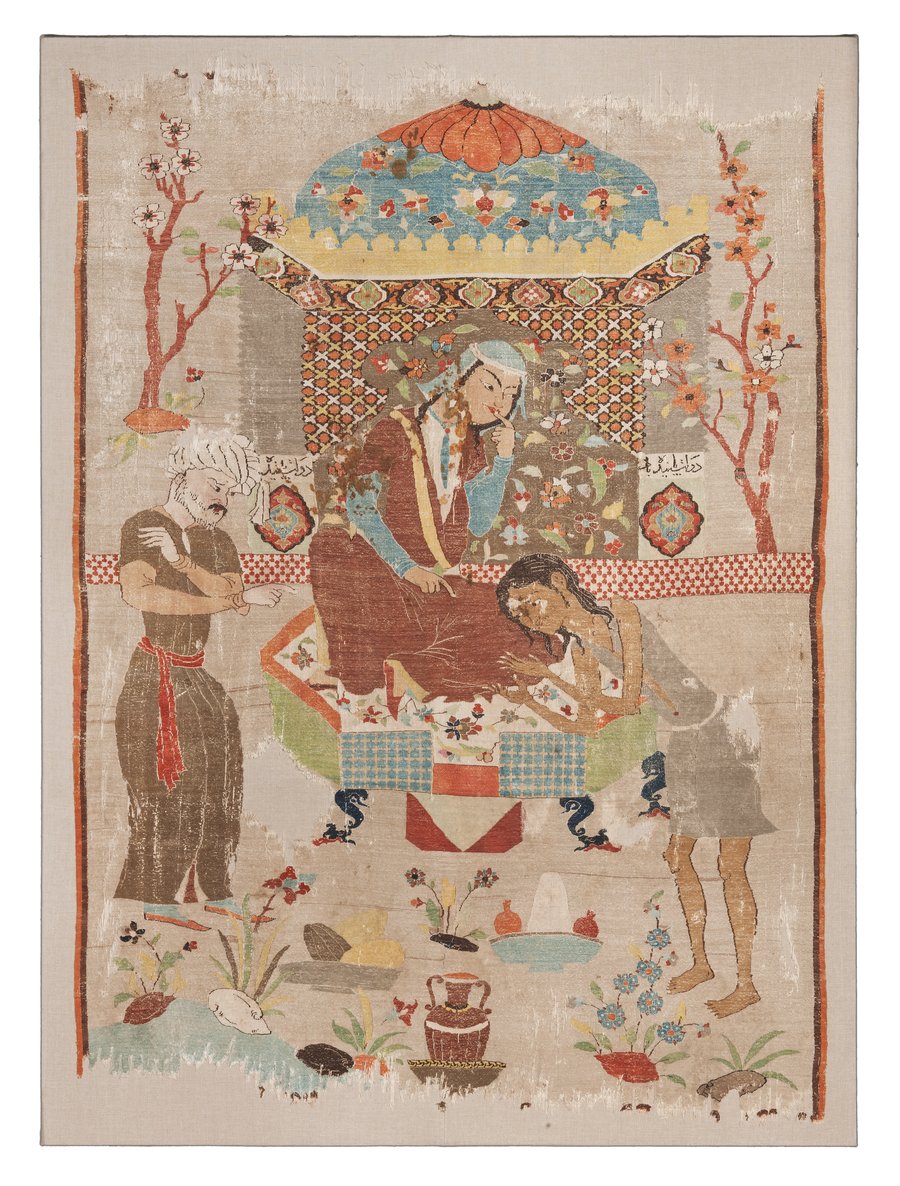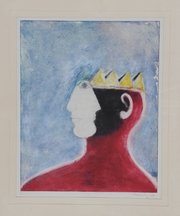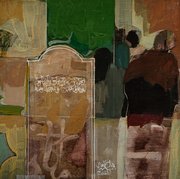
Tapestry with Layla and Majnun motif
Museum of Islamic Art
- Title:
- Tapestry with Layla and Majnun motif
- Production place:
- Kashan
- Date:
- 1880 - 1899
- Period:
- Safavid
- Title:
- Tapestry with Layla and Majnun motif
- Production place:
- Kashan
- Date:
- 1880 - 1899
- Period:
- Safavid
- Material:
- Silk
- Technique:
- Weaving
- Dimensions:
- 176 × 128 cm
This large figurative silk tapestry displays a well-known iconography often depicted in manuscript illustration and painting: the encounter of the ill-starred Bedouin lovers Layla and Majnun, whose tragic love story has have been popularised across the Islamic world by the twelth-century Iranian poet Nizami in his famous collection of poem known as Khamsa (Quintet). The tapestry shows Layla dressed according to early-Safavid fashion, sitting on a Chinese-style platform with dragon-shaped legs placed outside of her tent or canopy. She lifts her left-hand finger to her mouth, a conventional gesture of amazement and surprise in Persian painting. On the right, pleading for love, stands the emaciated and ragged figure of Majnun (lit. the madman, or the possessed), his skin burned by the sun for roaming in the desert, his hair unkempt and matted, his fingernails long. Another male figure, fully dressed and with a turban, stands on the left and looks in discomfort or contempt to Majnun. He may possibly represent a go-between figure for the two lovers, as told in Nizami's poem. On the very foreground, dishes with fruits and sugar cones, and an ewer with a basin have been prepared as for a garden banquet.
Scholars have debated around the dating of this unusual figurative tapestry: while some have ascribed it to 11th-century AH/17th-century CE Safavid Iran, others consider it a more recent (late 13th-century AH/19th-century CE) take on the illustrious silk weaving tradition of the Safavid period.



